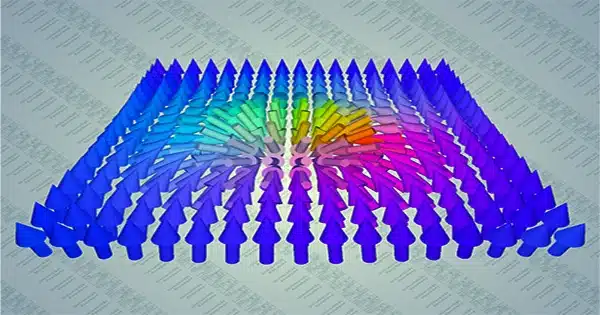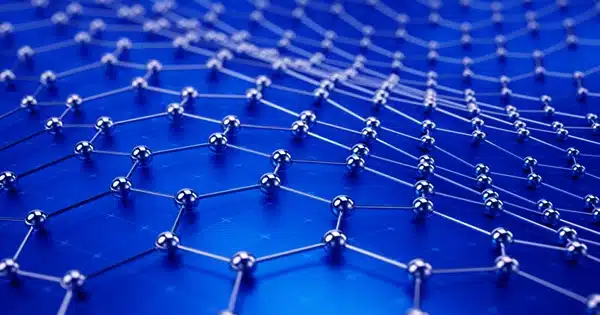Researchers at the University of Augsburg and the University of Vienna discovered magnetic skyrmions and antiskyrmions with arbitrary topological charges coexisting at ambient temperature in magnetic Co/Ni multilayer thin films. Their findings, published in Nature Physics, suggest a new paradigm for skyrmionics research.
The discovery of unique spin objects with arbitrary topological charges holds promise for breakthroughs in basic and practical research, notably in information storage devices.
Magnetic skyrmions are locally stable topological magnetic spin patterns that resemble a tornado-like swirl in a magnetic substance. They can be extremely small, with diameters in the nanoscale range, and behave like particles that can be moved, generated, and destroyed, making them ideal for ‘abacus ‘-style applications in information storage and logic circuits.

In their article in Nature Physics, titled “Dipolar skyrmions and antiskyrmions of arbitrary topological charge at room temperature,” a group of investigators at the University of Augsburg led by Prof. Manfred Albrecht demonstrate that these spin objects can only be found in a separate phase pocket in a stability diagram where the quality factor Q has a value of about one, which is given by the ratio between the uniaxial magnetic anisotropy and the magnetic shape anisotrop.
“We are thrilled with the intriguing insights acquired from the discovery of these spin objects, which can be easily produced at room temperature. “This is a remarkable scientific breakthrough in the field of skyrmions and topological spin objects,” explains Albrecht. These nanoscale skyrmionic spin patterns enable additional degrees of freedom and can be integrated into thin-film devices, enabling a variety of applications ranging from unconventional computing to novel storage concepts.
Another important feature of spin objects is that a spin-polarized current causes them to move. When a charge current flows through a conducting magnetic material, the polarized electron spin causes a torque on the magnetization known as spin-transfer torque. This torque can cause the higher-order skyrmions to move.
“Using micromagnetic simulations, we could demonstrate the efficient control of the motion of these extraordinary spin objects, which opens up further opportunities for skyrmionic devices,” explains Koraltan, a candidate from the University of Vienna’s computational group.
The study made substantial use of Lorentz transmission electron microscopy at the University of Augsburg, which is now being developed to visualize the current-induced motion of these multiple charge spin objects.
“To what extent our predictions about their motion characteristics can be confirmed experimentally will be very exciting to investigate shortly,” says Mariam Hassan, a postdoctoral researcher at the University of Augsburg.














